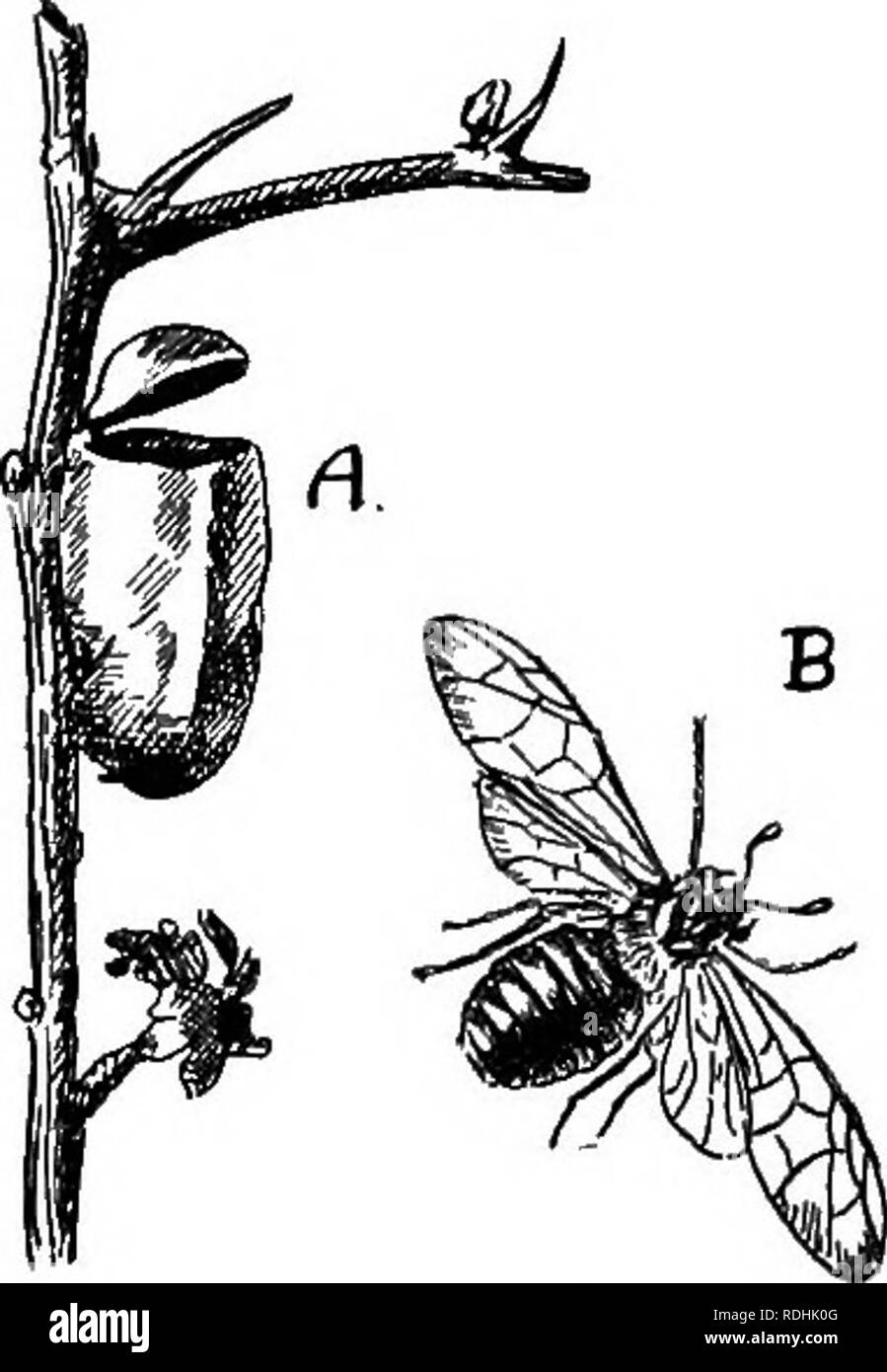. An introduction to zoology, with directions for practical work (invertebrates). 432 INTRODUCTION TO ZOOLOGY Other forms equally injurious are the Currant ^S^-flieT^ Saw-fly {NemaUs ribesii) and the Gooseberry Saw- fly {N. veniricosus), forms which at times literally strip the bushes of their leaves. The Turnip Saw-fly (Jthalia spinarum) has small black larvae whicb do great damage to the leaves of turnip crops. Trichiosoma befuleti (Fig. 324) is a Saw-fly the larva of which feeds on the hawthorn in July and August; it is green with minute white spots, and on pupation it makes for itself a si

Image details
Contributor:
The Book Worm / Alamy Stock PhotoImage ID:
RDHK0GFile size:
7.1 MB (217.1 KB Compressed download)Releases:
Model - no | Property - noDo I need a release?Dimensions:
1315 x 1900 px | 22.3 x 32.2 cm | 8.8 x 12.7 inches | 150dpiMore information:
This image is a public domain image, which means either that copyright has expired in the image or the copyright holder has waived their copyright. Alamy charges you a fee for access to the high resolution copy of the image.
This image could have imperfections as it’s either historical or reportage.
. An introduction to zoology, with directions for practical work (invertebrates). 432 INTRODUCTION TO ZOOLOGY Other forms equally injurious are the Currant ^S^-flieT^ Saw-fly {NemaUs ribesii) and the Gooseberry Saw- fly {N. veniricosus), forms which at times literally strip the bushes of their leaves. The Turnip Saw-fly (Jthalia spinarum) has small black larvae whicb do great damage to the leaves of turnip crops. Trichiosoma befuleti (Fig. 324) is a Saw-fly the larva of which feeds on the hawthorn in July and August; it is green with minute white spots, and on pupation it makes for itself a silky brown case (Fig. 324, ^), which is opened at one end of the perfect insect when it emerges. The fly is large and covered with reddish-brown hairs, and tiie tibia of the legs "''â 'fr^I^Ll^MZt-'' -- of - characteristically dusky colour. The larvae of some saw-flies remain within ^ Saw-flTe"^ *^® tissues of the leaf where the eggs were laid, and cause the formation of galls in the leaf, as in the case of the reddish "bean galls" on crack willow leaves (Plate IV.), caused by Nematus gallicola. The larvae when full grown, usually in early November, leave the galls and make their way into the soil, where they become pupae. The Saw-fly Pea Gall (Plate IV.) is formed by Nematus salicis-cinereae on the under side of the leaves of various smooth-leaved willows.. The Wood Wasp or Horn-tail (Sirex gigas)} 1^ inches The Wood Wasp is a conspicuous insect which may be long, and is coloured with black and gold bars. It belongs to a family closely allied to the true saw-flies, and having the same sessile abdomen, but it is peculiar in possessing a cylindrical boring apparatus which always pro- jects from the end of the body. The larva lives in the wood ' See- account in Miall's Injurious and Useful Insects for further details.. Please note that these images are extracted from scanned page images that may have been digitally enhanced for readability - coloration and a